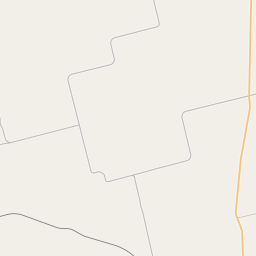Palava Cemetery
Historical marker location:






Originally named Center Point, the town of Palava traces its history to early settlement in this area in the late 1870s. It was renamed when the U.S. Government granted a request to establish a post office here in 1900. Stella A. Daniel, member of a pioneer Fisher County family, served as the town's first postmaster. As more settlers arrived in the early 1900s, the town grew into a cotton marketing center. At its peak Palava boasted homes, four churches, a school, and such businesses as a cotton gin, retail stores, blacksmith shop, barber shop, and cafe. Although the oldest documented burials in the Palava Cemetery date to 1893, it is believed there are unmarked graves from as early as 1855. Interments include those of veterans of the Civil War, World War I, World War II, and Vietnam. Also buried here is Charles Byrd (d. 1912), who served as a Texas Ranger in the Frontier Battalion in the 1870s. After the Palava School was consolidated with the Sweetwater School District in 1954, the community began to decline. The Palava Cemetery is now the only physical reminder of a once thriving town. It serves as a memorial to the area's pioneers. (1990)
As one of the most visible programs of the Texas Historical Commission (THC), historical markers commemorate diverse topics in Texas history, including: the history and architecture of houses, commercial and public buildings, religious congregations, and military sites; events that changed the course of local and state history; and individuals who have made lasting contributions to the state, community organizations, and businesses.
The state of Texas was once an independent country known as the Republic of Texas. It gained independence from Mexico in 1836 and was a separate nation until it was annexed by the United States in 1845.
The early settlers of Fisher County were primarily ranchers and farmers who were attracted to the fertile land and abundance of water sources, particularly the Colorado River. These pioneers faced many challenges, including severe weather conditions and conflicts with Native American tribes in the area. However, they persevered and gradually developed thriving communities, mainly centered around farming and ranching.
The arrival of the railroad in the late 1800s greatly enhanced the county's economic development. The railroad allowed for the transport of goods and improved access to markets, leading to the growth of towns such as Roby and Rotan. With the expansion of the rail network, Fisher County became an important transportation hub in the region.
In the 20th century, Fisher County faced some setbacks, including the effects of the Great Depression and a decline in population due to the mechanization of farming. However, the discovery of oil and gas reserves in the area in the 1940s provided a boost to the local economy. Today, Fisher County continues to rely on agriculture, oil and gas, and small businesses as its main economic drivers, while also preserving its historical heritage through museums and cultural events.
Fisher County Timeline
This timeline provides a concise overview of the key events in the history of Fisher County, Texas.
- 1870: Fisher County was established on February 1, 1876, and named after Samuel Rhoads Fisher, a signer of the Texas Declaration of Independence.
- 1880s: The first settlement in the area was established near the Clear Fork of the Brazos River.
- 1890s: The county experienced a population boom with the arrival of the Texas Central Railroad.
- 1911: The town of Roby was designated as the county seat of Fisher County.
- 1930s: Fisher County, like the rest of the country, was greatly affected by the Great Depression.
- 1940s: The discovery of oil and gas in the county led to economic growth and increased population.
- 1970s: The county faced economic challenges due to declining oil prices.
- 2000s: Fisher County continued to be primarily agricultural, with farming and ranching as the main economic activities.